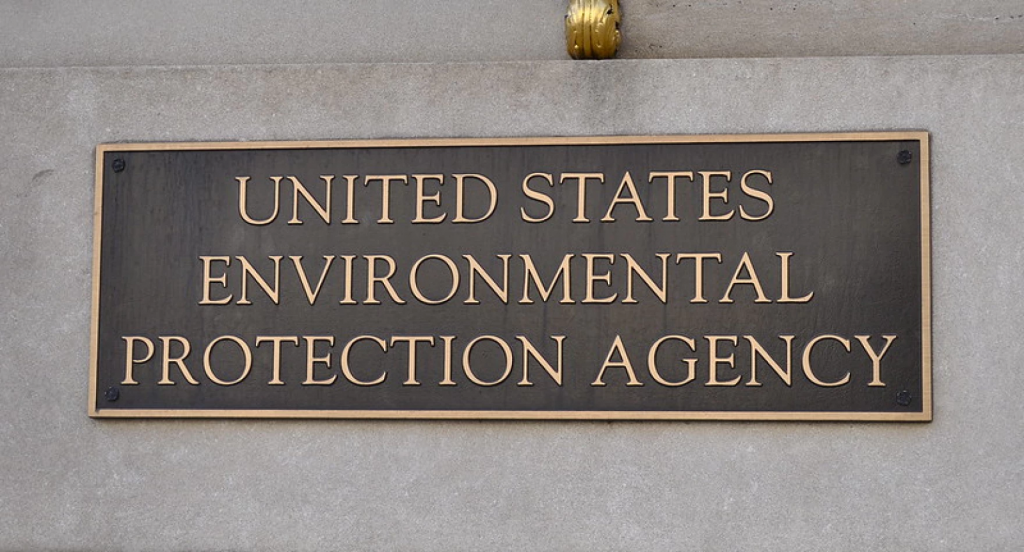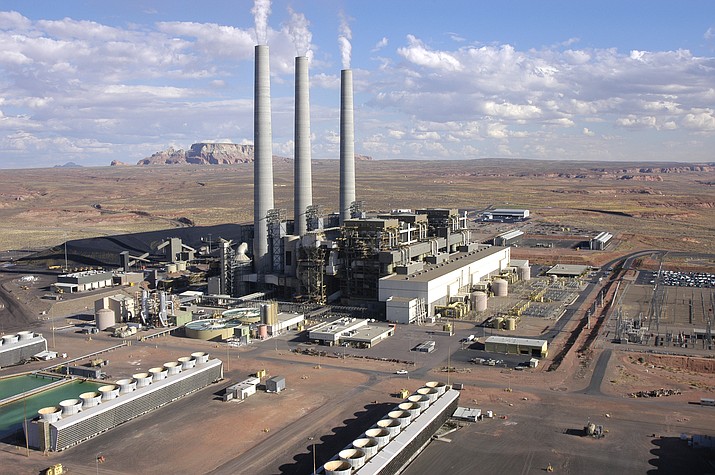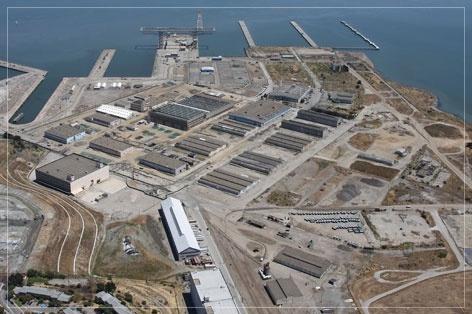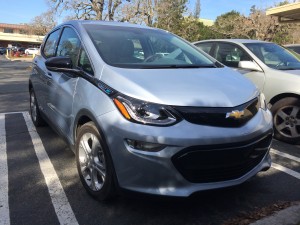
I’ll be double-hosting on KALW today. First, on Your Call’s One Planet Series at 10am PT, we discuss the Trump administration’s attack on environmental protections.
Donald Trump’s EPA chief, Lee Zeldin, plans to roll back more than two dozen regulations that protect our health, air, water, and climate, eliminate the Office of Research and Development, and fire hundreds of scientists. Joining us to discuss will be:
- Ken Alex, director of Project Climate at UC Berkeley’s Center for Law, Energy, & Environment
- Marianne Lavelle, award-winning reporter for Inside Climate News
Later in the program, we’ll examine the Trump administration’s decision to drop a landmark environmental justice case in Louisiana’s cancer alley, with Robert Taylor, executive director of Concerned Citizens for St. John.
Then at 6pm PT, I’ll be hosting State of the Bay. First, we’ll talk to San Francisco Mayor Daniel Lurie about his new plan on homelessness.
Then we’ll talk about the suffering endured by millions of people due to Long Covid, with Dr. Linda Geng, co-director of the Stanford Long Covid Collaborative, and Philip Hoover, a screenwriter and North Bay resident who has firsthand experience navigating life with Long COVID.
Finally, we’ll talk to Ramon Ramos Alayo of the dance festival CubaCaribe.
Tune in at 91.7 FM in the San Francisco Bay Area or stream live at 10am PT for Your Call and then again at 6pm PT for State of the Bay. What comments or questions do you have for our guests? Call 866-798-TALK to join the conversation!
 As expected, the Trump Administration today rolled out their proposed alternative regulation to the Obama-era Clean Power Plan to reduce carbon emissions from the U.S. power sector. The administration was in the somewhat awkward position of having to promulgate a climate rule by order of the U.S. Supreme Court, so the basic tack is to make the regulation effectively meaningless.
As expected, the Trump Administration today rolled out their proposed alternative regulation to the Obama-era Clean Power Plan to reduce carbon emissions from the U.S. power sector. The administration was in the somewhat awkward position of having to promulgate a climate rule by order of the U.S. Supreme Court, so the basic tack is to make the regulation effectively meaningless.
Here are some of the low-lights:
- EPA’s draft rule is expected to lower annual U.S. emissions by 0.7 percent to 1.5 percent by 2030 compared with a business-as-usual scenario, compared to 19 percent below the business-as-usual scenario with the original Clean Power Plan.
- The “foregone benefits” of the proposed rule means more pollution compared with the Clean Power Plan, particularly affecting residents in the Midwest, east to Pennsylvania, and West Virginia, with increases in premature death and morbidity (“foregone avoided deaths”), as my colleague Sean Hecht explains.
- The rule contains a new regulatory loophole that allows existing dirty fossil fuel plants to increase their hours of operation without triggering any new environmental review, as my colleague Meredith Hankins describes.
- The proposed rule has no standard for states to meet in terms of reducing greenhouse gas emissions from their power sector.
So for me there are four ultimate takeaways for the proposed rule:
- It is a giveaway to the coal industry at the expense of cheaper, cleaner power sources,
- It has multiple legally dubious provisions that will likely take years to resolve in court.
- It replaces an unfortunately weak rule in the Clean Power Plan, which was not going to push the power sector much more than existing state policies on renewables and the current supply of cheap natural gas.
- It means the real action on the U.S. power sector will occur when Democrats regain Congress and the Presidency, at which point they should (and probably will) prioritize some sort of national greenhouse gas standard for the U.S. power sector, as part of a federal response to climate change.
Until the politics change, however, we’ll have to watch this rule work its way through the courts.
 The Obama EPA’s proposed “Clean Power Plan” was that administration’s big effort to regulate carbon pollution under the federal Clean Air Act. But now the Trump administration is set to propose an alternative approach this week that is likely to lead to more pollution and ironically less flexibility for the business community (similar to how the auto industry got an unwelcome full-scale rollback of clean car standards with potentially years of litigation and uncertainty to come).
The Obama EPA’s proposed “Clean Power Plan” was that administration’s big effort to regulate carbon pollution under the federal Clean Air Act. But now the Trump administration is set to propose an alternative approach this week that is likely to lead to more pollution and ironically less flexibility for the business community (similar to how the auto industry got an unwelcome full-scale rollback of clean car standards with potentially years of litigation and uncertainty to come).
The Obama Clean Power Plan was a response to the U.S. Supreme Court case Massachusetts v. EPA (2007), in which the court ordered EPA to treat greenhouse gases as a traditional air pollutant under the statute. So when it came to implementing the order for the U.S. power sector, EPA’s Clean Power Plan was an effort to limit carbon emissions from power plants, particularly dirty coal-fired ones.
EPA’s approach was to regulate the whole system of power within a state, not just the plants themselves. This approach allowed states to come up with their own plans to meet federal targets set by EPA. The key was that these plans could regulate “beyond the fence line” of fossil fueled-power plants, to provide more flexibility to meet these targets. States could use a mix of energy efficiency, renewables, carbon trading, and energy storage to reduce the overall carbon footprint of the power sector as a whole.
The alternative “inside the fence line” approach would have required massive and expensive on-site upgrades to coal-fired power plants to reduce their carbon emissions, most likely through unproven and costly carbon capture and storage approaches, in which the carbon would be captured from the smokestack and pumped underground. Costs would have been passed on to ratepayers.
The upside of the “beyond the fence line” approach was that utilities and states would have significant flexibility to meet these EPA carbon targets in the most cost-effective, technologically proven way. The downside was the legal vulnerability it created, by calling into question just how far EPA’s reach could go in regulating the power sector.
Needless to say, coal industry leaders feared the negative impacts this plan would have on their power plants. And in Trump they’ve found a receptive audience.
According to the New York Times, the Trump EPA will reportedly release a new plan this week that will task states with coming up with their own plans and targets — even deciding not to set carbon targets at all. Furthermore, all of the regulatory action must happen “inside the fence line.”
The result of this weak approach will likely be a new lease on life for many coal plants in the U.S., and ironically much less flexibility for utilities and grid operators to meet any stringent targets set by states that truly want to reduce carbon from the power sector.
As with any Trump regulatory action, the new regulation will be litigated, and so far the Trump administration has been on an epic losing streak in the courts. And the continuing price declines of renewable energy and natural gas has generally made coal non-competitive going forward anyway.
This new move is yet another attempt by Trump’s team to rescue a dirty and dying industry through regulatory favoritism. Meanwhile, the litigation that will result may not be finalized by the time of the next presidential election, giving some hope for a political resolution and better result in the meantime.
Some environmentalists have noted with schadenfreude that the auto industry is getting its just desserts now for pressing the Trump administration to weaken Obama-era fuel economy standards. While the auto industry may have originally just wanted some additional flexibility for compliance, instead they got a wholesale revocation of the program.
And this rollback means a worst-case scenario for the auto industry, with potentially years of litigation and uncertainty to come. In short, they won’t know what type of vehicles to produce for the next few years at least.
So if the auto industry didn’t want the administration to take this approach, why is it happening? The answer may involve the other industry that benefits from weakening fuel economy standards: Big Oil. As Bloomberg reported:
The Trump administration’s plan to relax fuel-economy and vehicle pollution standards could be a boon to U.S. oil producers who’ve quietly lobbied for the measure.
The proposal, released Thursday, would translate into an additional 500,000 barrels of U.S. oil demand per day by the early 2030s, about 2 to 3 percent of projected consumption, according to government calculations.
Apparently oil industry leaders have been quietly lobbying for this action, including Marathon Petroleum Co., Koch Companies Public Sector LLC, and the refiner Andeavor. In fact, on the KQED Forum show I participated on this past Friday, one of the guests supporting the rollback was from the Koch-funded think tank “Pacific Research Institute.”
So it looks like Big Oil doesn’t really care if the auto industry twists in the wind on the rollback, if it means the possibility of selling a lot more climate-destroying oil in the meantime.
 Some residents of San Francisco’s Bayview neighborhood feel like they’ve been lied to by the government about the toxicity of the adjacent Hunters Point Shipyard. The Navy used the area for decades as a nuclear energy and waste facility. After the Navy left, it became a designated Superfund site and underwent a major cleanup effort.
Some residents of San Francisco’s Bayview neighborhood feel like they’ve been lied to by the government about the toxicity of the adjacent Hunters Point Shipyard. The Navy used the area for decades as a nuclear energy and waste facility. After the Navy left, it became a designated Superfund site and underwent a major cleanup effort.
Yet while San Francisco has big plans to develop the site, questions remain about falsified soil tests, the health of Bayview residents, and the government’s failure to protect these communities of color.
On tonight’s City Vision we explore the accusations of environmental racism around the Hunters Point Shipyard clean up. Joining me to discuss will be:
- Sheridan Enomoto – Community Organizer and Policy Advocate for Greenaction for Health and Environmental Justice.
- Theo Ellington – Resident of Parcel A in the Hunters Point Shipyard, member of the San Francisco Human Rights Commission, and candidate for Supervisor representing Bayview Hunters Point.
- Lindsey Dillon – at UC Santa Cruz, author of an upcoming book on the history of the Hunters Point Shipyard.
Tune in at 7pm or live stream. Hope you can join the discussion!
The U.S. Environmental Protection Agency, under new management with the recent sacking of Scott Pruitt, will apparently be moving ahead next week with a proposed rollback of national fuel economy standards post 2020. The agency will also try for the first time in history to revoke a previously granted waiver to California to allow the state to set more aggressive standards and require automakers to produce a certain number of zero-emission vehicles, per E&E [pay-wall]:
EPA is expected to propose a rule in the coming days to prevent the standards from rising past the 2020 levels established under former President Obama, who hailed those increases as a major step toward addressing rising temperatures.
Also in the crosshairs is a California waiver under the Clean Air Act that allows it and more than a dozen other states to surpass federal car rules. EPA is expected to ask for comment on rescinding the waiver, a move that many see as a signal of the administration’s intent to do just that.
 The move will set off a battle royale of litigation, probably taking years to resolve and possibly relying on the swing vote of whomever fills Justice Kennedy’s seat on the U.S. Supreme Court.
The move will set off a battle royale of litigation, probably taking years to resolve and possibly relying on the swing vote of whomever fills Justice Kennedy’s seat on the U.S. Supreme Court.
If the agency is successful (and if Trump is re-elected in 2020), it will probably badly damage the electric car market in the U.S., particularly in California, where the ZEV mandate has been the critical policy tool for encouraging automakers to introduce new EV models.
All of this retrograde action sets the stage for China to eat our lunch:
China’s generous subsidies to electric vehicle makers have created a massive field of producers, and it’s only growing.
The industry is one of 10 identified for state investments three years ago as part of President Xi Jinping’s Made in China 2025 plan. A total of 487 companies currently exist, fueled by $15 billion in direct subsidies for EV sales over the last five years.
Those subsidies are still coming: In June, the National Development and Reform Commission and China Construction Bank Corp. announced an additional $47 billion fund for high-tech industries, including EVs.
While I’m happy to see international investment in EVs continue, it’s depressing to see the Trump Administration try to roll back progress on this environmentally crucial — and economically beneficial — clean transportation technology.
Scandal-plagued EPA Administrator Scott Pruitt finally resigned today, after weathering scores of likely ethics violations (at least 14 federal investigations are looking into his conduct in office). It’s even possible he’ll be facing criminal charges based on some of his actions, particularly allegations that his office doctored public records related to his schedule and hid emails from the public.
Meanwhile, his resignation letter reveals his belief that God helped Trump get elected and also put Pruitt in his position of power — a hubris that likely contributed to his lavish lifestyle while in office:
Mr. President, it has been an honor to serve you in the Cabinet as Administrator of the EPA. Truly, your confidence in me has blessed me personally and enabled me to advance your agenda beyond what anyone anticipated at the beginning of your Administration. Your courage, steadfastness and resolute commitment to get results for the American people, both with regard to improved environmental outcomes as well as historical regulatory reform, is in fact occurring at an unprecedented pace and I thank you for the opportunity to serve you and the American people in helping achieve those ends.
That is why it is hard for me to advise you I am stepping down as Administrator of the EPA effective as of July 6. It is extremely difficult for me to cease serving you in this role first because I count it a blessing to be serving you in any capacity, but also, because of the transformative work that is occurring. However, the unrelenting attacks on me personally, my family, are unprecedented and have taken a sizable toll on all of us.
My desire in service to you has always been to bless you as you make important decisions for the American people. I believe you are serving as President today because of God’s providence. I believe that same providence brought me into your service. I pray as I have served you that I have blessed you and enabled you to effectively lead the American people. Thank you again Mr. President for the honor of serving you and I wish you Godspeed in all that you put your hand to.
Your Faithful Friend,
Scott Pruitt
From a good government perspective, it’s a win that Pruitt is out. It’s also a credit to investigative journalism that surfaced many of these scandals.
But from an environmental perspective, it actually may be a loss. Pruitt was deeply tied to industry and hostile to environmental protection. But he was tremendously incompetent at actually laying the evidence-based case for regulatory rollbacks, instead focusing on splashy press conferences to make it look like a new policy was actually going into effect. Instead, many of his efforts are likely to be reversed by the courts.
His temporary successor, deputy administrator Andrew Wheeler, is likely to be much smarter about regulatory rollbacks, as my colleague Sean Hecht writes on Legal Planet:
Pruitt’s replacement (at least for now), Andrew Wheeler, is certain to continue the anti-regulatory, anti-science slant of this EPA. In addition to being a coal industry lobbyist, Wheeler was chief of staff for many years for Sen. James Inhofe, who was been the Senate’s strongest voice against climate science and environmental protection. His views in opposition to strong environmental and public health protection are widely known. At the same time, Wheeler has a reputation for being more careful than Pruitt, and also for understanding the workings of the agency. This should mean that he will be less likely to break agency norms and alienate staff. But from a policy perspective, Wheeler’s ascension to this role will surely continue the path Pruitt has been on since he was confirmed, and possibly be even more effective. Regardless, it’s sure to be an interesting time at EPA.
We’ll see what happens on the policy front. But in the meantime at least, all who care about good government should celebrate this departure.
Yesterday, California and 17 other states sued the U.S. Environmental Protection Agency for its decision last month to halt Obama-era fuel economy standards for vehicles in model years 2022-25. KTVU News Channel 2 in the Bay Area interviewed me last night as part of their story on the lawsuit:
Scott Pruitt’s decision earlier this month to rollback Obama-era fuel economy standards has gotten a lot of media attention — rightfully so. In an interview last week with The Real News Network out of Baltimore, two other panelists and I had an opportunity to discuss the implications:
For those unable to watch the video, a transcript is available.
KTVU Channel 2 news in the Bay Area covered EPA’s proposed rollback of Obama-era fuel economy standards last night, including an interview with me about the likely legal fight and economic repercussions:


